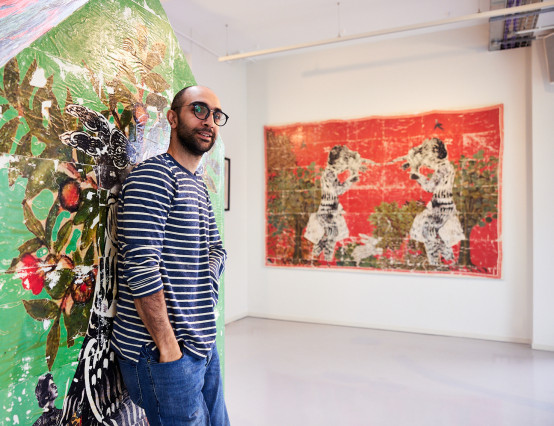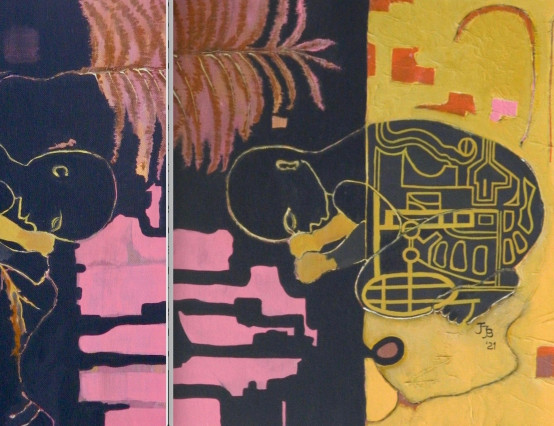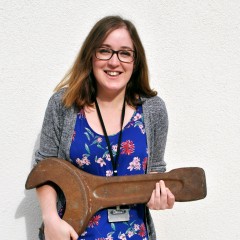We speak to the Community, Learning and Volunteer Officer of the Clifton Suspension Bridge Trust to find out about more about her role and the invaluable benefits of volunteering.
Could you first introduce yourself to the reader?
Hey! I’m Kat Tudor, and I work for the Clifton Suspension Bridge Trust. The Clifton Suspension bridge was opened in 1864, designed by an engineer called Isambard Kingdom Brunel and completed by Sir John Hawkshaw and William Barlow.
The bridge is a toll bridge and open to the public all year around. It’s an important part of the history of Bristol, and we are a popular tourist attraction. I’m based in the Visitor Centre, and my role is called Community, Learning and Volunteer Officer. I am responsible for the volunteer team, the education programme and outreach activities.
What does your job involve? Give us the typical outline of a day?
This is a very hard question! That is because I am doing something different almost every day, it also depends on what time of the year it is. In the spring and summer school term, I’m very busy delivering tours and workshops for schools. In the winter I am recruiting and training new volunteers to help with the Visitor Centre or education programme. All year around I am arranging tour bookings, organising the volunteer rota and helping run the Visitor Centre.
What’s great about your job?
I am very lucky to work with a fantastic team of volunteers. They are all very passionate about the history of the bridge, and are always willing to help. We calculated that this season the volunteer team have donated over 2,855 hours!
I am always bowled over about how generous volunteers are with their time.
What are the bits you don’t like or find challenging?
I have lots of different things to do, so sometimes I find it challenging to successfully manage my time within the designated amount of hours I should work a week. However, I do think I have picked up some new tricks to improve this. For example, putting on an out of office message when I am very busy, using my diary to book in admin time and ensuring I have a priority list for time sensitive tasks.
What are the highlights of your career to date?
From April 2017 - April 2018 I was manager for a project called Hawkshaw and Barlow Untold. We were awarded funding by the History Makers Scheme supported by AIM and Biffa Award to build a new exhibition about the two engineers who completed the suspension bridge called John Hawkshaw and William Barlow. It was a great experience for me, and the final exhibition panels are a permanent part of the Clifton Suspension Bridge Visitor Centre exhibition.
What was your career path into this job? Have you also worked outside the Arts?
After I graduated university in 2010 (obtaining a BA Hons in Fine Art) I beganworking as a Visual Merchandiser in the retail industry, this gave me a lot of transferable skills, however I always knew that I wanted to be part of the heritage sector.
I began volunteering with my local community arts group, and I then joined the Cardiff Story Museum volunteer team. I was then lucky enough to be offered a paid jobs as a researcher with the Cardiff Story Museum and as Front of House with Bristol Culture. After deciding that I wanted to fully pursue a career in heritage I applied to complete an MA in Museum Studies with Leicester University. At some points in my career I was working three jobs and studying in the evenings, but I was lucky enough that this experience led to me to join the Clifton Suspension Bridge Trust team in 2016.
Can you describe your biggest challenge so far in your career? How did you overcome it?
Completing my MA Museum Studies dissertation was a really big challenge for me. It was a lot of research and writing alongside working full time. Luckily, my manager at the bridge was really supportive and I was able to take some time off work near the deadline. My family were also there to help encourage me and proofread my final document, so I was able to complete it with their help and support.
Have you noticed any changes in the industry? If so, what?
I don't really feel that I have been in the industry long enough to notice big significant changes. The first thing that comes to mind are staff cuts within council museums, compared to 10 years ago. Some museums have lost half of their staff which naturally restricts the amount work that they can do. This is especially a shame for museums that are active within the community.
The importance of museums and the positive impact on health and wellbeing they can have within their local area is quite under estimated, so cutting staffing can have a negative impact.
Do you have any advice for young people interested in doing your kind of job?
It is really good to get a varied amount of volunteer experience, and the heritage sector is one of the friendliest and welcoming sectors I have had experience with. Your local museum will most probably have a volunteer team that you can join, which is a good way to learn new skills and gain new experiences. It is not only good for your CV, but it will also help you make sure that this is the sector you want to pursue your career in.
How do you think museums can involve young people in heritage?
It would be great if more museums were able to open their doors to young people on a designated day during the summer holidays. This could be for a behind the scenes tour, a heritage career inspiration day or to meet the staff and volunteers. This could lead to future volunteers or internships with the museum, and inspire young people to forge a career in heritage.









This is a great interview!